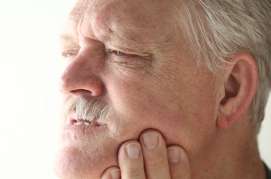Orofacial pain fact and fiction

Patients looking for relief from the radiating pain of temporal mandibular disorders (TMDs) in the face, jaw or neck will find an avalanche of misinformation online—and surprisingly, a lot of it comes from dentists who bill themselves as specialists in treating the condition, according to a survey of 255 dentists' websites across the country.
More than two-thirds of the websites wrongly attributed the cause of TMDs to occlusal problems or malocclusion, and nearly 55 percent recommended TMDs be managed by treating the underlying bad bite, said Bhavik Desai, an assistant professor in the department of diagnostic sciences who coauthored the study published in the journal Oral Surgery, Oral Medicine, Oral Pathology, Oral Radiology.
"I am sure these dentists are trying to help their patients," Desai said, but studies have shown that there is no significant correlation between occlusion and TMD pain.
As far back as the 1960s, one of the study's other coauthors, Daniel Laskin, published research documentary that bad bites don't cause TMDs. Yet "people still seem to believe that is true," Desai said. The researchers did note that many of the sites with inaccurate information may not be updated regularly.
For their research, Desai and colleagues at Virginia Commonwealth University School of Dentistry surveyed dentists' websites to see what they were saying about TMDs and what treatments they recommend. They did an internet search for "TMD specialist" and used the top results in each state.
Nearly 39 percent of the sites labeled TMDs as a single disorder, even though the pain may originate in very different places: the muscles, bones, joint space or ligaments. "It's not one disease," said Desai, who is a board-certified member of the American Academy of Oral Medicine.
Even worse is what treating occlusion problems usually means: irreversible and expensive procedures, such as braces, crowns, bridges, repositioning splints, grinding down teeth or surgically repositioning teeth.
So what is the recommended treatment? The current thinking, laid out in a 2010 policy statement from the American Association for Dental Research, is that while no specific therapies have proven uniformly effective, conservative measures—including ibuprofen and other analgesics, stress-reduction techniques, jaw stretching and relaxation exercises, and plastic bite guards that fit over the lower teeth—have worked just as well as more aggressive treatments, and they are far less likely to cause harm or make the problem worse, Desai said.
The study also looked at the kinds of dentists who claimed to be TMD specialists: 68 percent were general dentists, and 23 percent were oral surgeons. Desai said this is one reason that the American Dental Association should recognize orofacial pain as a specialty. Providers who have trained in oral medicine or orofacial pain, he said, "should be the obvious choice for patients with temporal mandibular disorders to reach out to, but that's not that case."
















